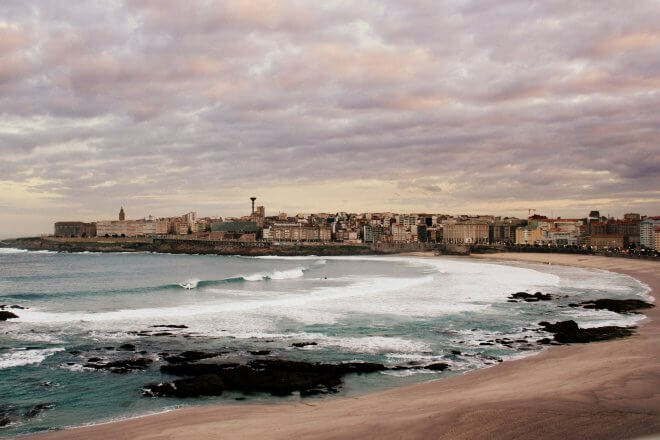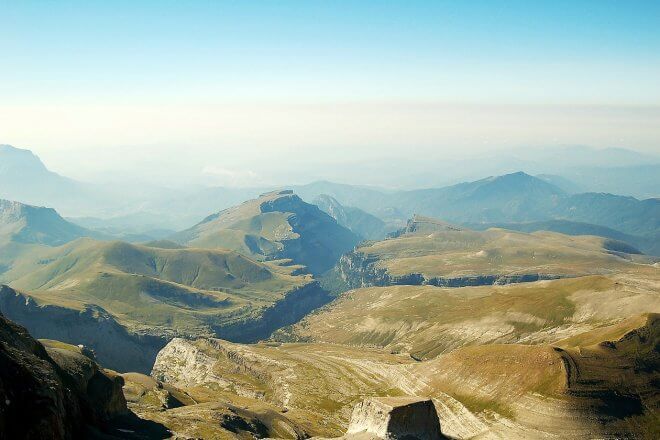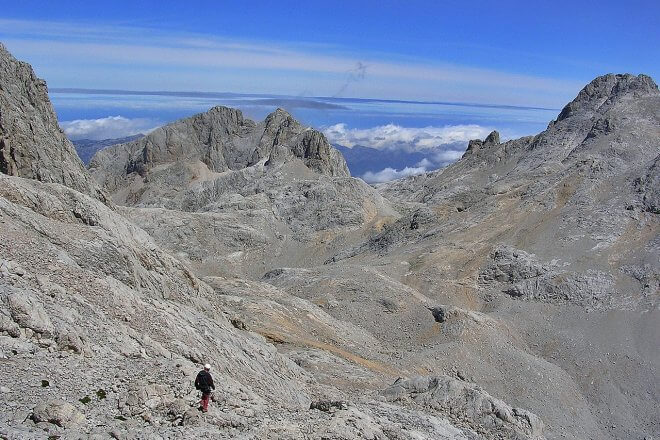Alternative Travel Index Rank: #1
Spain also ranks first amongst the Top 10 Cultural Travel Destinations
Excels in cultural heritage, environment protection, and transport efficiency
Population and tourists density at peak season: 103 (medium)
Spain (Spanish: España) is a diverse country sharing the Iberian Peninsula with Portugal at the western end of the Mediterranean Sea. It is the country with the second-largest number of UNESCO World Heritage sites, after Italy, and the largest number of World Heritage cities.
Despite welcoming nearly 61 million tourists every year and being positioned at the very top into all official rankings, Spain also meets the taste of the alternative travelers, thanks to its unique cultural and natural assets.
Travel Costs
Spain ranks #105/141 for price competitiveness in Justraveling’s Alternative Travel Index. Average travel costs per day: $53 (backpacker) – $177 (mid-range). Cheapest Spanish cities: Santa Cruz de Tenerife, Burgos, La Orotava, Santiago de Compostela, Malaga, Leon. Most expensive Spanish cities: Alcala de Henares, Gijon, San Sebastian, Bilbao, Guadalajara, Barcelona.
Best Time to Go
Mar-May and Sep-Oct are the best time to go to Spain, to avoid the crowds and enjoy mild temperatures and mostly sunny skies. There is no low season for the Canary Islands, as the weather resembles springtime all year round.
Places to Visit
Antequera, aka “the heart of Andalusia”, has an impressive archaeological and architectural heritage. The nearby natural reserve of El Torcal, with its unstable limestone rocks, forms one of the best karst landscapes in Europe.
Ordesa is a glacial valley in the Spanish Pyrenees, well known for its waterfalls and wildlife. The landscape is dominated by the great massif of Monte Perdido (3.355 mt), the third highest mountain in the Pyrenees.
Somiedo is a natural park located in Asturias (north of Spain). Its traditional farming methods are regarded as an example of sustainable living, and were a factor in UNESCO’s designation of the park as a Biosphere Reserve in 2000. There are seven main walking routes throughout the park.
La Gomera is the second smallest island of the Canary Islands. Unspoilt and beautiful, it’s an idyllic place for hikers and cyclists, just 35 to 60 minutes away from the crowded Tenerife. La Gomera hosts the unique Laurisilva rainforest.
Chinchón is a medieval town located at 48 km from Madrid. It’s not a major touristic area, so it’s well worth a visit if you want to see Spain in the raw. The town also features a fort and is surrounded by vineyards and olive groves.
Albarracín is a picturesque town surrounded by stony hills that was declared “Monumento Nacional” in 1961. The town lies in a meander of the Guadalaviar River and is surrounded by the Sierra de Albarracín mountain range.
Urbane and restless, A Coruña (Galicia) is one of the most walkable cities in Spain. It’s renowned for its characteristic glazed window balconies and has two city beaches, a fairly large historic old town, and several excellent museums.
Travel Ideas and Things to Do
The Anillo of Picos de Europa is a spectacular circular route which runs for 123 km inside the homonym National Park, close to the northern coast of Spain. The area is very popular with mountaineers, climbers, mountain walkers and, of course, hikers and nature lovers, and holds many of world’s deepest caves.
Used since 1330 and restored in 2010, el Camí de Cavalls (the Horses’ Trail) encircles the island of Minorca. The 186 km path has twenty different stages averaging 10 km each and gives access to some of the most remote beaches.
Catalonia is a showcase of European landscapes on a small scale, representing the perfect set for active cycling holidays. Here you can count on an extensive network of roads and paths, as well as a good climate and remarkable sceneries.
Paradores is a state-run chain of exclusive accommodations, such as adapted castles, monasteries, and other historic buildings. With their 40 “Experiencias Paradores“, this chain offers a chance to combine unique stays with various leisure and cultural activities in the surrounding areas.
Get involved in scientific research with ArchaeoSpain and spend a few weeks at fascinating archaeological sites, including Pulpon, Pintia, and Son Peretó.
Are you looking for a family-friendly cultural route? The north of Palencia, also known as the Palentian Mountain Range, has the greatest concentration of Romanesque art in the whole Europe, along with an enviable natural setting.
More active travel ideas for your next trip can be found in the Hiking Series. Check out these five routes to enjoy an awesome day hike in Spain or embark on a historical journey such as the Camino de Santiago. On the blog, you can also get some helpful hints for walking in Madrid and discovering Valladolid.
Keen on some real urban exploration? Browse our favorite trails in Madrid.
This Travel Guide is a work in progress. Improve it with a Spanish touch!
- Browse All European Destinations
- World’s Best Alternative Travel Destinations
- Trip Planning: Inspiration, Budget, Flights, Accommodations, Tools
Sources: some text excerpts from Wikitravel & Wikipedia; travel cost data from Numbeo.




